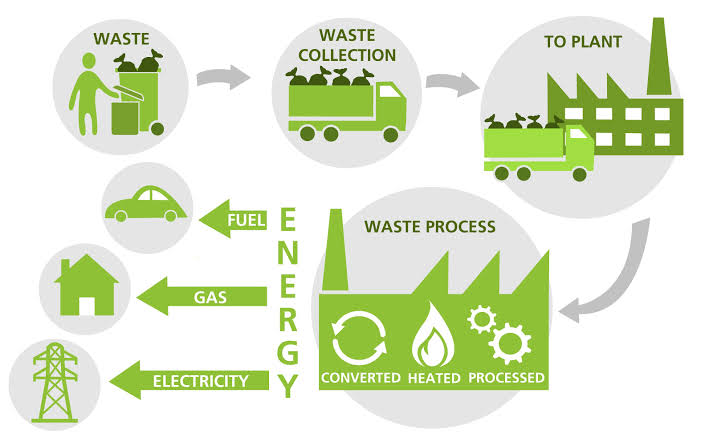
With urban lifestyles quite catching up with rural India, solid waste is a problem becoming equally concerning and engulfing in scale and size irrespective of the locale. If 0.3 to 0.4 million metric tons of solid waste is generated every day and is left unmanaged then serious long-term environmental consequences are inevitable across the rural landscape.
Lack of basic sanitary awareness and careless littering are the prime reasons for environmental degradation leading to poor standards of living. This urgently calls for appropriate and systematic handling of domestic refuse and only a properly designed functional waste management system can rescue our beautiful villages from the bane of pollution.
Solid waste in rural areas is predominantly organic and bio-degradable. Currently, technologies available to manage Biodegradable Solid Waste are Composting and Vermicomposting. Composting is a fuss-free simple technique where vegetable waste, garden waste, agricultural waste, and cattle dung can be composted to receive quite a crude form of manure. Whereas Vermi-composting uses various species of worms to break down the organic material, producing nutrient-rich high-quality compost and needs a special vermi-tank or a vermi-bed. Non-biodegradable Solid Waste such as plastic, glass, metal, and so on can be recycled and what cannot be recycled is sent to landfills.

Under Swachh Bharat Mission Local Governing Bodies like Gram panchayats are mandated with implementing solid waste management programs. An ideal six-stage process is also designed to sustainably manage waste. It starts with the collection of properly segregated waste into Wet, Dry and Hazardous categories and after going through multiple processes concludes with systematic disposal for each kind of solid waste.
Wet waste undergoes secondary segregation wherein plastics and harmful materials are removed. It is then shredded or crushed before sending to vermicomposting or gasification plants.
Dry Waste is sorted for recyclable or sellable items like bottles, pet bottles, plastics, milk/oil covers, bottle caps, etc. and sold to waste or scrap dealers on a periodical basis.
Hazardous wastes like diapers, sanitary napkins, medical waste are sent to an incinerator for disposal through combustion whereas items like old batteries, blades, fused bulbs/ tubes, broken ceramic items, rusted tins, etc. are sent to landfill.
Sanitary Landfills need a careful selection of site and operational planning. Normally dumpsites are mistaken for landfills. Landfilling is a scientific process carried out taking into account factors like ground water, soil, and other environmental pollution possibilities. Only non-bio-degradable wastes that cannot be recycled and are harmful for local residents health are fit for landfills. A low-lying site away from the residential area is an ideal site. First a gravel bed is prepared at the bottom to prevent any possible water and soil contamination and then after every subsequent layer sand cap or clay cap led on top to trap all air polluting gases like methane and carbon dioxide.
With effective reduce, reuse and recycle process if we could restrict landfill bound material to 10 to 15% and out of the remaining 45% to gasification plant / composting and 40% for recycle then one can be sure of encouraging outcomes.
But there has been many a slips between cup and the lips when it comes to smooth and consistent operation of Solid Waste Management program. In most of the cases besides non-cooperation from households regarding segregation of waste, operational lacunas at every stage of SWM, non-availability of manpower and mainly financial infeasibility of the entire system leads to complete failure. Charging collection fees from households and businesses frequently hits the roadblock and whole SWM fades away into oblivion. The few ever successful implementation models that are seen around are self-sufficient and professionally run models where the waste is treated as income generating resource.
So instead of leaving the onus for opting technologies on Grampanchayats and other Government organizations and then face the impending failures, the need was felt to provide them with standardized solution that will not only ensure self-sufficiency but also reliability of the operation.
BIO STABILIZED AERATED STATIC PILE (BASP) is such innovative and proven solution. Urban or rural organic waste is a valuable natural resource which can be transformed into a marketable product. EMERGY has developed a user-friendly composting technology for biological stabilization of organic waste under controlled environment for efficient management of organic waste. The end product can be used as a soil enhancer in agricultural fields, gardens and/or forest land. This technology can be adopted by either public or private stake holders for wide range of applications due to its modular nature. Ideal for 500 kg of organic waste and above, BASP is an odor and mosquitoes free, minimal leachate solution giving high quality sellable product.
Integrated Solid Waste Management Plan
For rapidly growing rural areas where waste generation is rising exponentially putting an Integrated Solid Waste Management Plan in place at the earliest is the wisest and reasonable decision to make.
EMERGY’s customized Integrated Solid Waste Management Plan is a fail-proof, easy-to-implement system and aims at maximum waste recovery, reuse of recyclable waste, good quality composting and minimal waste going to landfills. EMERGY also assists in project implementation at each stage from inception to the commissioning on turnkey basis leaving nothing to local functionaries imagination or discretion.
With continuously evolving research and emerging successful models and best practices across the country the focus has clearly shifted from ‘Solid Waste Management’ to ‘Solid Resource Management’ for sure!